Wheelchair Accessible London: The Ultimate Guide
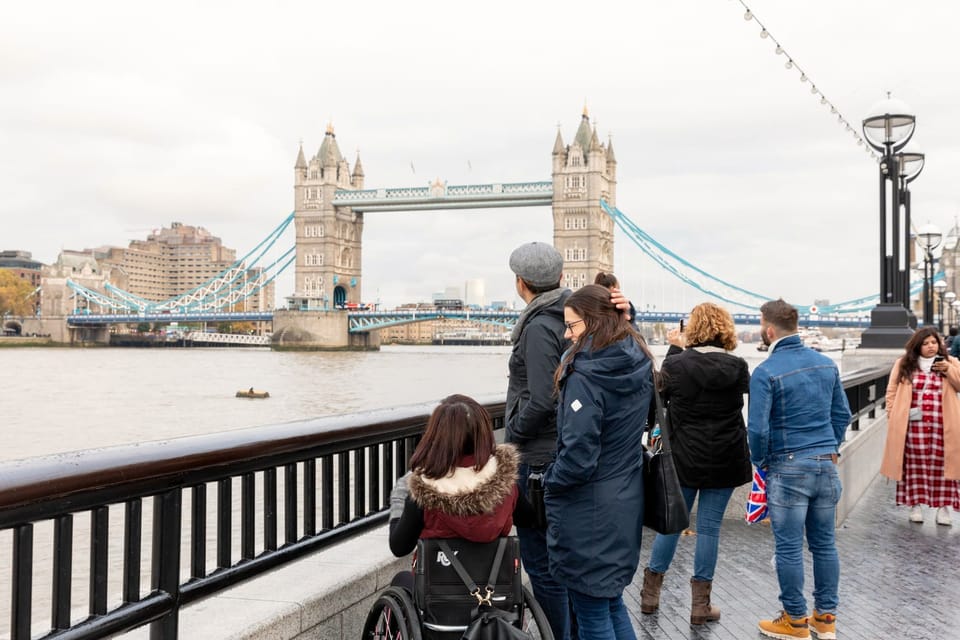
What's Ahead?
- About Accessible London and Why Travel There
- When Should You Travel to London?
- Season Recommendations
- Where to Stay in London
- Accessible Transportation in London
- Top 10 Things to do and Their Accessibility
- Accessible Restaurants Recommended by Our Community
- Accessible London Tips from Our Community
- Wheelchair Repair Shops
- Safety
Accessibility is key to providing an inclusive environment. Unfortunately, when it comes to travel information, the accessibility information for destinations around the world is severely lacking. The problem is, people with disabilities still love totravel. But without essential information, trips can be shortened or simply not enjoyable.
Because of this, here at Wheel the World, we want to provide accurate, reliable accessibility information. And, we don't just do this for attractions at different destinations, but for transport, hotels, restaurants, and more. By providing accessible accessibility information, you can have a much more enjoyable experience when you travel. So, check out our ultimate accessible London guide for the best time away.
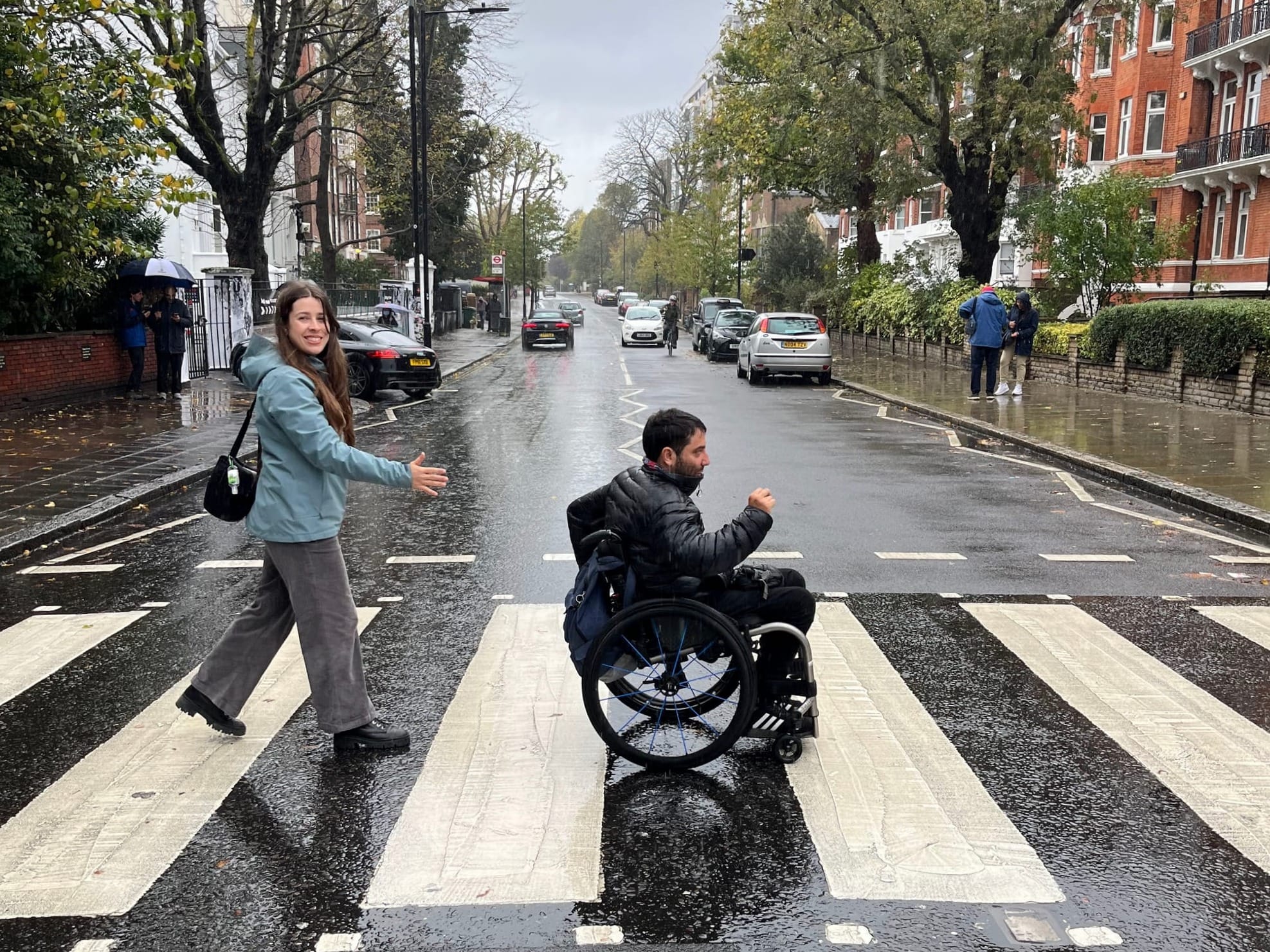
About Accessible London and Why Travel There
When it comes to accessible cities, London is one of the most wheelchair accessible in Europe. This is due, in large part, to its well-maintained, flat, smooth sidewalks and a distinct lack of cobblestones. Instead, sidewalks in London are made of cement, or smooth paving stones for improved roll-ability. Of course, it's not perfect everywhere, as some are slightly uneven or require some maintenance. For the most part, though, they're considered good to excellent.
On top of that, large swathes of London, and indeed other UK cities, are pedestrianized. This means there are many accessibility features promoting mobility for everyone. For instance, curb ramps are found where you would need them, there are regular pedestrian crossings with visual and auditory signals.
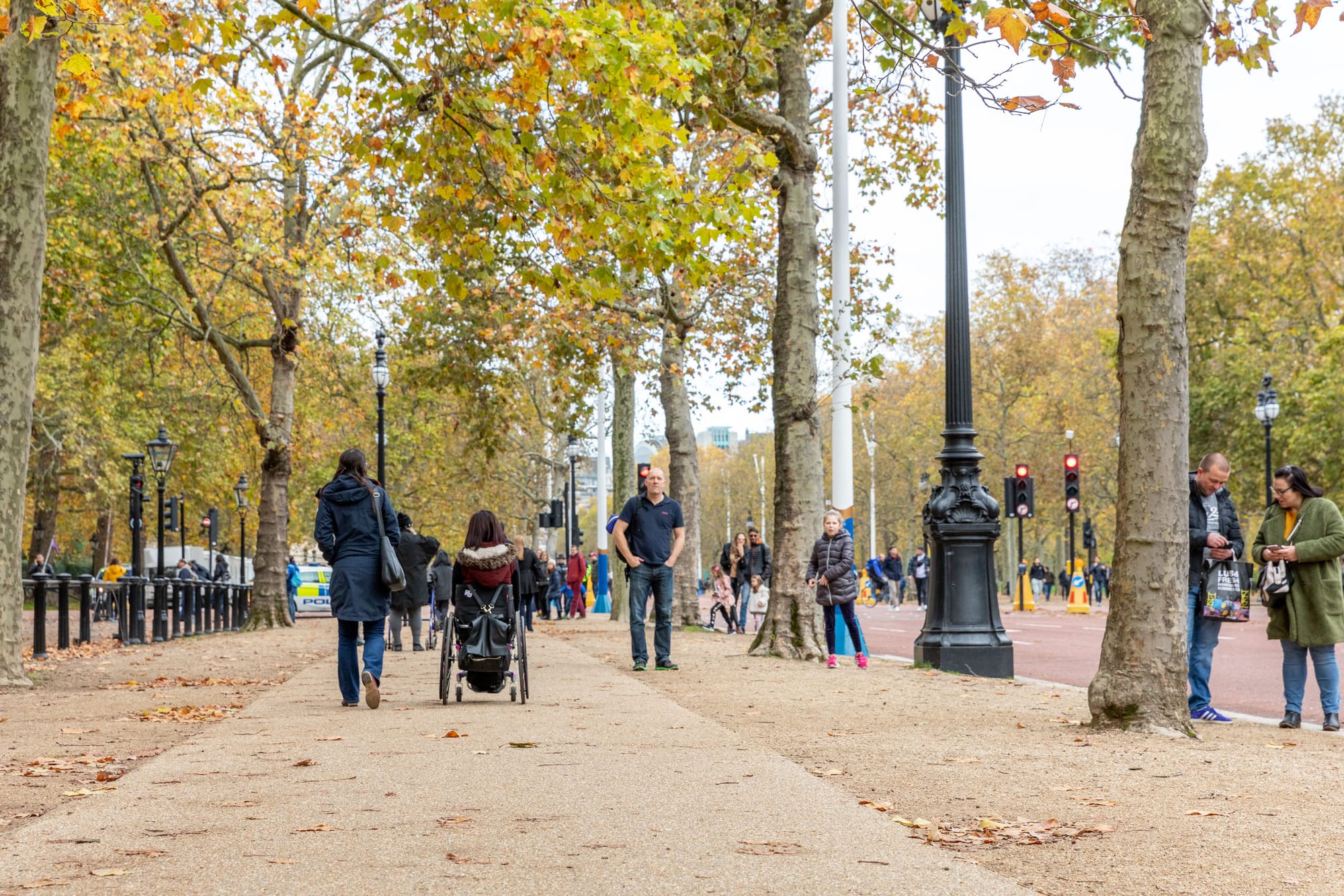
Another major plus-point for accessibility is the geography and terrain. London, like much of the south of England, is very flat. There are some gentle inclines in places, as well as some hillier areas, but the majority of London is flat making it easy to get yourself about under your own steam. The River Thames flows through the center of London, but the pedestrian-only Millennium Bridge offers excellent accessibility for all to attractions on both banks. In Central London, in particular, sidewalks are wide enough to accommodate thousands of people, particularly in pedestrianized areas. In addition to accessibility, there are many reasons to make London your destination. It has a rich cultural history packed with iconic landmarks such as Big Ben, numerous museums, and a vibrant theater scene. Some of the attractions here are considered world-class including the London Eye, and the British Museum. For many, the monarchy is a big draw, and you can find many monuments, buildings, and palaces such as the Tower of London and Buckingham Palace to keep you interested.
Finally, London is home to some incredible sporting events, festivals, carnivals, and parades. For instance, this is the home of Wimbledon, the O2 Arena, the Notting Hill Carnival, and the Trooping of the Colour. Additionally, each neighborhood (of which there are many), has its own distinct vibe and culture to enjoy. These diverse areas provide something different when it comes to art and food too.
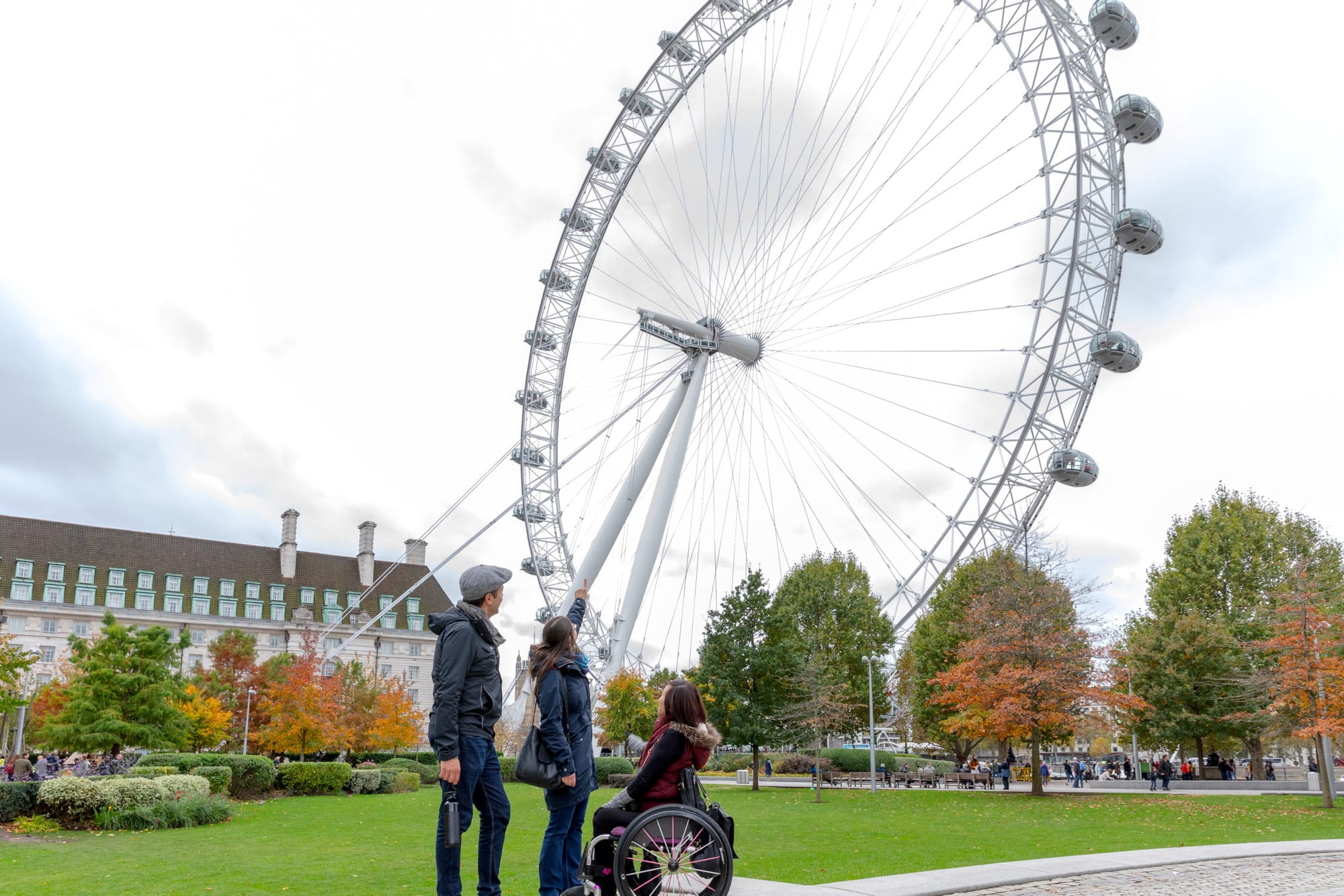
When Should You Travel There?
London is a lot of fun, but there are some times of the year that are better than others. By taking a look at the four seasons, we can help you figure out when would be the best time for you.
Fall
From September to November, this is when the temperatures start to drop. Often ranging from 53°F to 60°F, a coat is a must during this time. Rain is common during the Fall, so bringing rain gear is a must if you plan on being out and about.
Spring
At just the right temperature (similar to Fall with highs of 60°F), March to May is a solid time to visit. Spring sees the gardens in full bloom and has slightly less rain than the Fall. However, bringing an umbrella and a raincoat is still a must because April Showers are very much a thing.
Summer
June to August bring in the summer heat which, depending on the year, can see temperatures range from 69°F to 86°F. It can get humid too, which means light clothing for a better range of movement is a must. Sunscreen is essential too, but so is rain gear because London typically has 109 rainy days per year.
Winter
The coldest months run from December to February with temperatures of around 35° to 42°F. While snow is not common, be prepared for it if you're going in February. Typically though, it's more wet and windy, which doesn't make for good, easy wheelchair navigation as the streets become slippery and filled with large puddles.
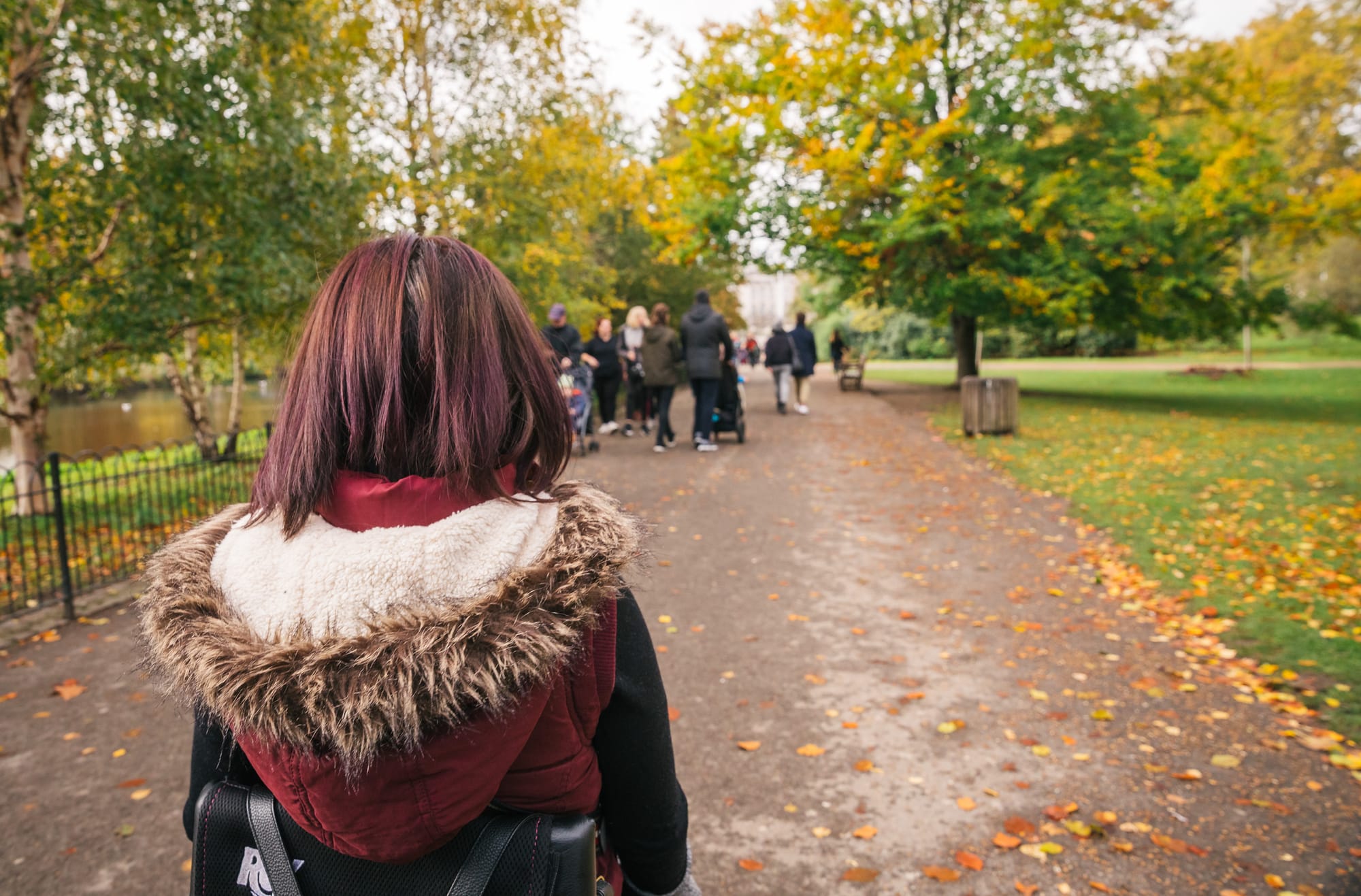
Season Recommendations
When to visit London really depends on you. To further help you out, here are some of the main events that might make one season stand out from another to aid you with your decision.
- March to May is Spring, complete with milder temperatures and flowers in full bloom. This is a great time if you want to explore nature and enjoy places like Kew Gardens and the many London Parks for a picnic. As a shoulder season, there are fewer crowds too, giving you better access to many attractions.
- June to August offers the best weather and is when most people visit. If you want to spend your time outdoors or enjoy some of the sporting events, then Summer is the best time. There are many music events and festivals taking place during this time too and, with long days, you can spend hours soaking up the atmosphere outside. It is peak season though, so prices will be higher.
- September to November is Fall and it's similar to Spring. There are fewer tourists, and you can enjoy colorful leaf changes throughout Britain's capital city. The River Festival occurs during this time, and offers a month-long festival of food, music, and exhibitions if you want to immerse yourself in English culture. The Museum of London also holds night events during this time.
- December to February is best if you can handle the cold and want to enjoy the festive season. Days are very short though, so you will have to be smart in planning what you see. Apart from the Christmas and New Year period, there are fewer tourists around. However, if you do stay for New Year, watching the London fireworks bring in the New Year from a high vantage point is a must.
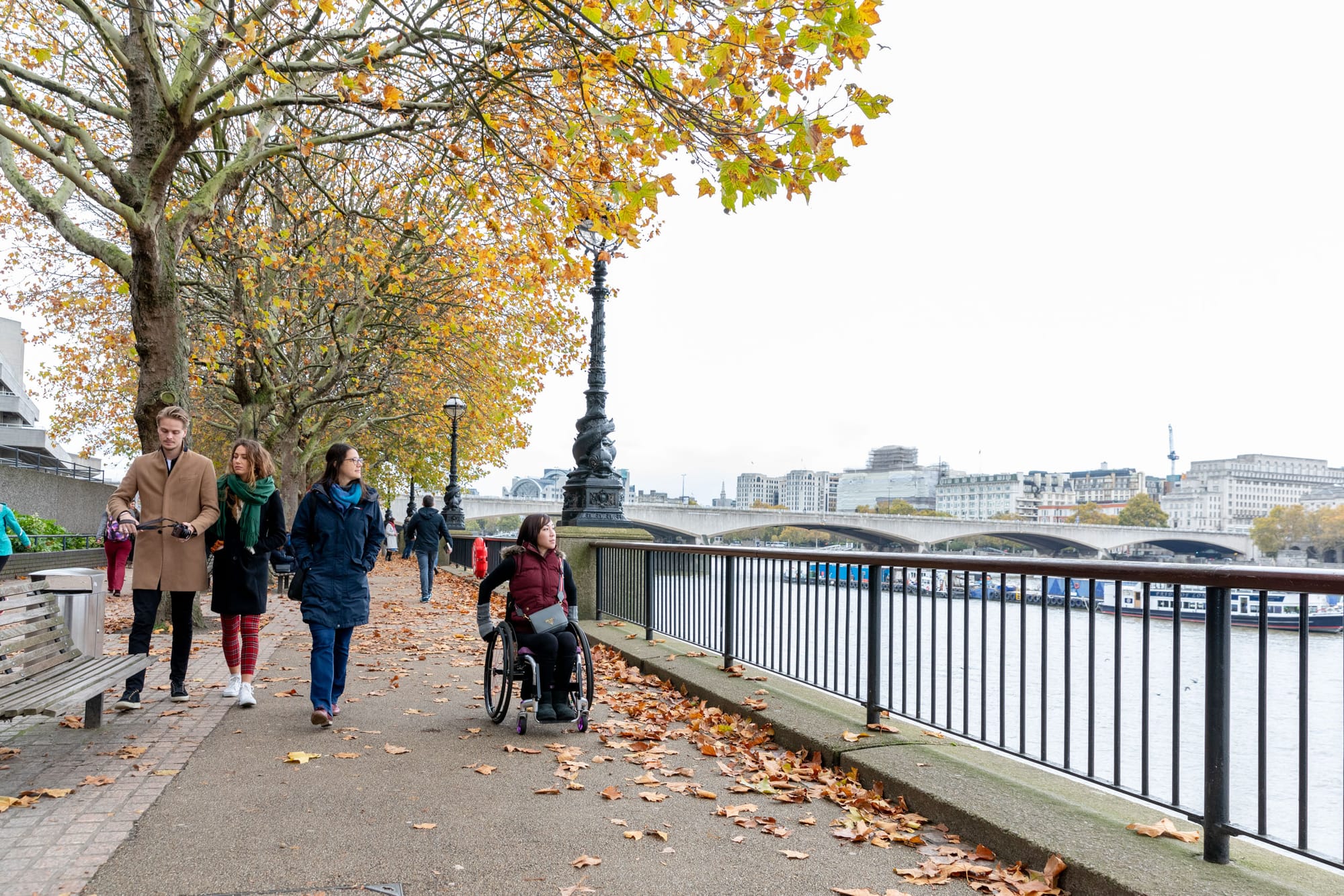
Where to stay in London
One of the things to consider when staying in London is that it is truly huge. There are many attractions, but these are scattered across the city. It may seem wheelable, but it often isn't, so choosing the right neighborhood to stay in is essential if you have difficulties getting around. Choosing where you stay will also likely shape your trip and what you've got time to see. Overall, there is a plethora of accessible hotels in London to choose from.
For the fun-filled spirit of London, Soho is still the place to go. It's packed with shops, restaurants, bars, and theaters. All of this gives it a rocking vibe. However, Covent Garden is a touristic paradise and is really the center of the action. It's packed with shops, food, and more. Better still, it's within easy reach of Soho and other main tourist areas such as the West End, Oxford Street, and Leicester Square. Be warned though, there are cobbles here, but it's a charming place to stay. Middle Eight is a stylish hotel about a half-mile walk from the National Gallery and Leicester Square. The Great Scotland Yard Hotel is another great option with spacious rooms and outstanding accessibility. If you'd like to stay on Leicester Square itself, The Londoner is one to consider.
All of those hotels have roll-in showers and offer quality accessibility features.
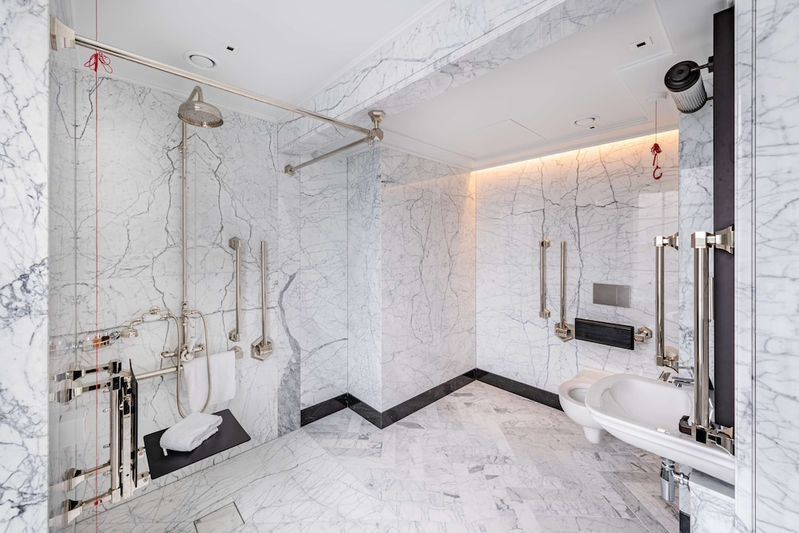
Another central location, but one with a food and drink focus, is Southbank or Bankside. It's a great place to explore Central London from as it's very well connected, but also has plenty of exciting bars to enjoy. The Hilton London Bankside is within wheeling distance of the Tate Modern and the Globe Theatre.
Kings Cross is a strategic area to stay in as it's one of the main transport hubs. It's not as upmarket as some areas but offers a more pop-up vibe. It's got top music venues, pizzerias, and a pop-up cinema by the canal in the summertime. Point A Hotel Kings Cross is a solid budget option, without sacrificing on accessibility.
Accessible Transportation in London
Getting to and from London as well as around the city itself is something you need to pay attention to given the sheer size of the city. Happily, London's transport system caters to those with reduced mobility and accessibility providing plenty of options to travel throughout the city. Knowing what's on offer is the best way to prepare yourself for the trip to London.
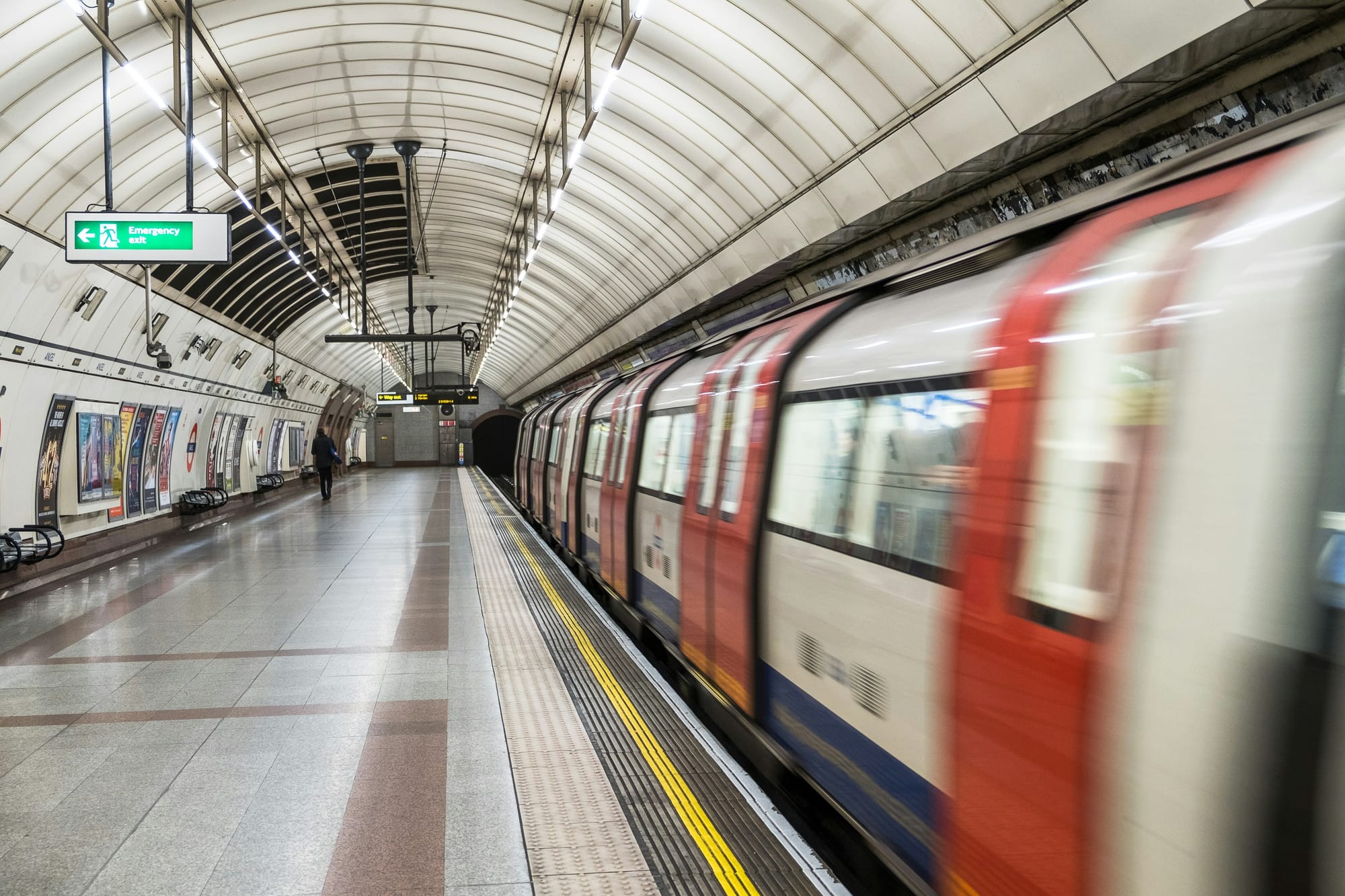
Moving to/from the Airport
There are many airports close to London, some closer than others. As such, knowing exactly how to make your way to the center of London is essential so that you don't get lost or stressed.
Heathrow Airport
The biggest airport serving London, it's also one of the closest with great connections. The Heathrow Express gets you into London Paddington train station in just 15 minutes. Trains are non-stop and run from all Heathrow terminals.
The London Underground, or the Tube, has three stations — Terminals 2/3, 4, and 5. It's the cheapest option to get into London. The Piccadilly Line takes less than an hour and runs every 10 minutes from Heathrow. The newer Elizabeth Line takes 45 minutes to get you to central London (Zone 1). Trains run every half an hour.
All three are equipped for passengers with disabilities and have reserved seating spaces, boarding assistance, and adapted access.
Gatwick Airport
Located south of London, this airport connects to London via the Gatwick Express and Southern or Thameslink trains. The Express runs every 15 minutes and takes half an hour to get to central London. Trains take slightly longer. However, both options have facilities for reduced mobility needs including access ramps, designated seating, and trained staff.
Stansted Airport
Relatively close to London, Stansted has two main options for getting into the big city. The quickest, most direct option is the Stansted Express train to London Liverpool Street. It runs every 15 minutes and takes just over half an hour. National Express buses and coaches are also available but stop at 38 pick-up points with 15 in Central London. Both have accessible facilities and will provide additional assistance when it is requested.
Luton Airport
Connected to London by Thameslink trains and shuttle buses, Luton's transport options get you to St Pancras International Station. All trains and buses are adapted, providing a range of features to help those with reduced mobility.
London City Airport
The only airport located within the city, it's also the least frequently used for tourist flights. However, its central location does make it easy to get to your final destination. The Docklands Light Railway (DLR) connects the airport to parts of London and offers accessible carriages with adapted stations with elevators.
Finally, at all airports, it is possible to get a taxi into London, though this can be pricey. Similarly, you can opt for a personal transfer that offers ramps and comfort on your journey.
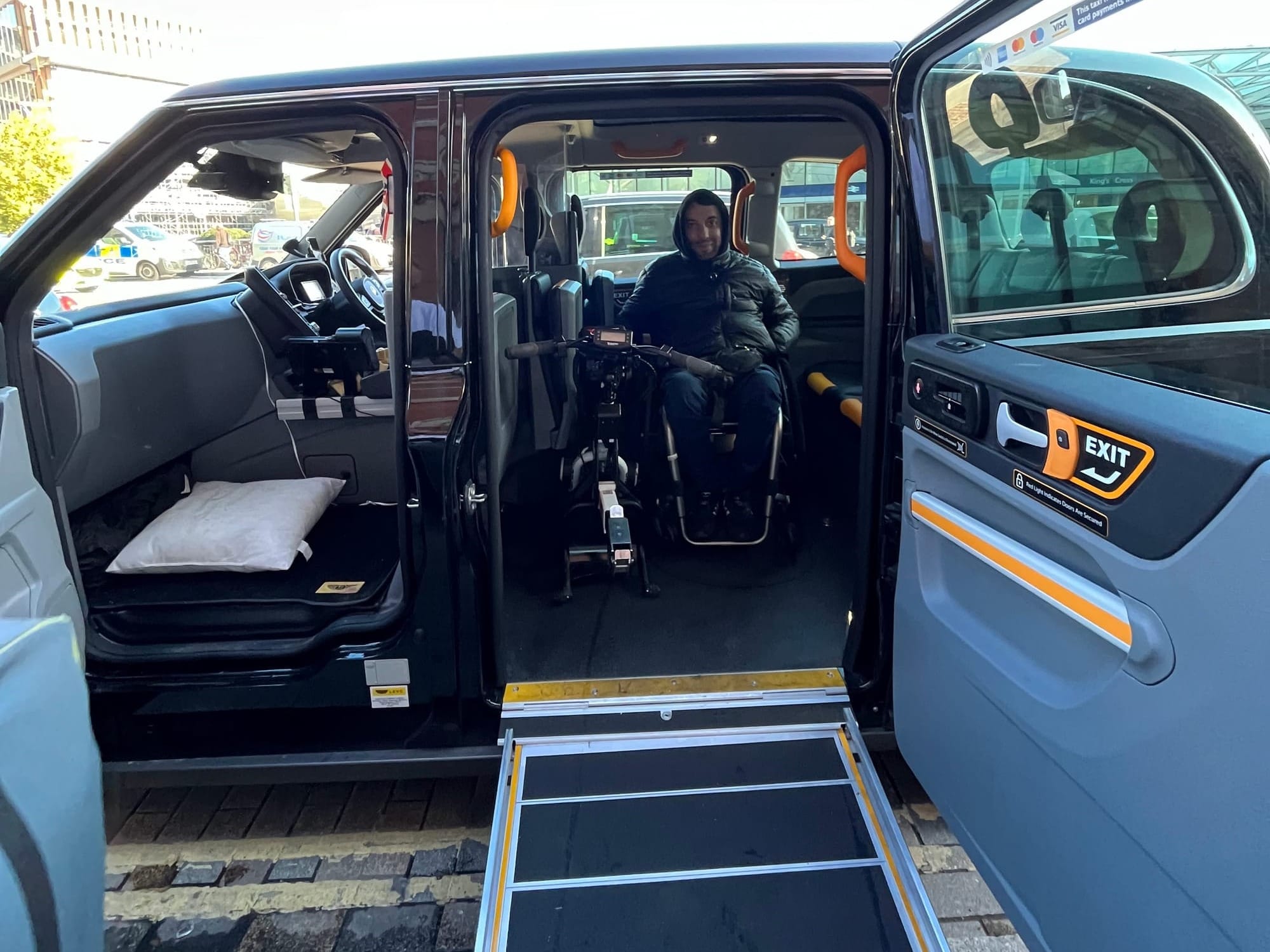
Getting Around London in a Wheelchair
London is very accessible for those with reduced mobility. However, as we've mentioned, London is also very large. Some areas are not easy to walk or wheel to, so you'll need to take some form of transportation to get there. Luckily, London has many options including trains, buses, boats, trams, and even a cable car, all operated by Transport for London. There are still some accessibility issues, although huge steps have been made to rectify this.
The Tube
An extensive network of stations and lines makes up the London Underground (subway). It includes Overground trains, the DLR, and trams. While improvements have been made, not all trains and stations are fully accessible. Newer trains are all accessible offering large wheelchair spaces and ramps. Older carriages though, are often smaller, and only have spaces for manual wheelchairs. It really depends on the line which carriages you get and is often down to luck.
Most Tube stations have wide barrier access to allow wheelchairs through, as well as elevators to get those with reduced mobility down to the station level. However, many trains and platforms still have gaps in between making them not ideal for solo wheelers as help is needed to bridge the gap. It's a good idea to check Transport for London, as there is a full guide for step-free London Underground access.
Buses
The bus network in London is one of the best in terms of accessibility. There are over 9000 buses offering wheelchair accessibility features that include ramps, designated seating areas, wheelchair spaces, and reserved seating. The network includes over 700 routes with 17,000+ stops covering the city incredibly well. It offers a great above-ground option for getting from A to B. And, with bus lanes, even in busier times, you won't get stuck in London traffic.
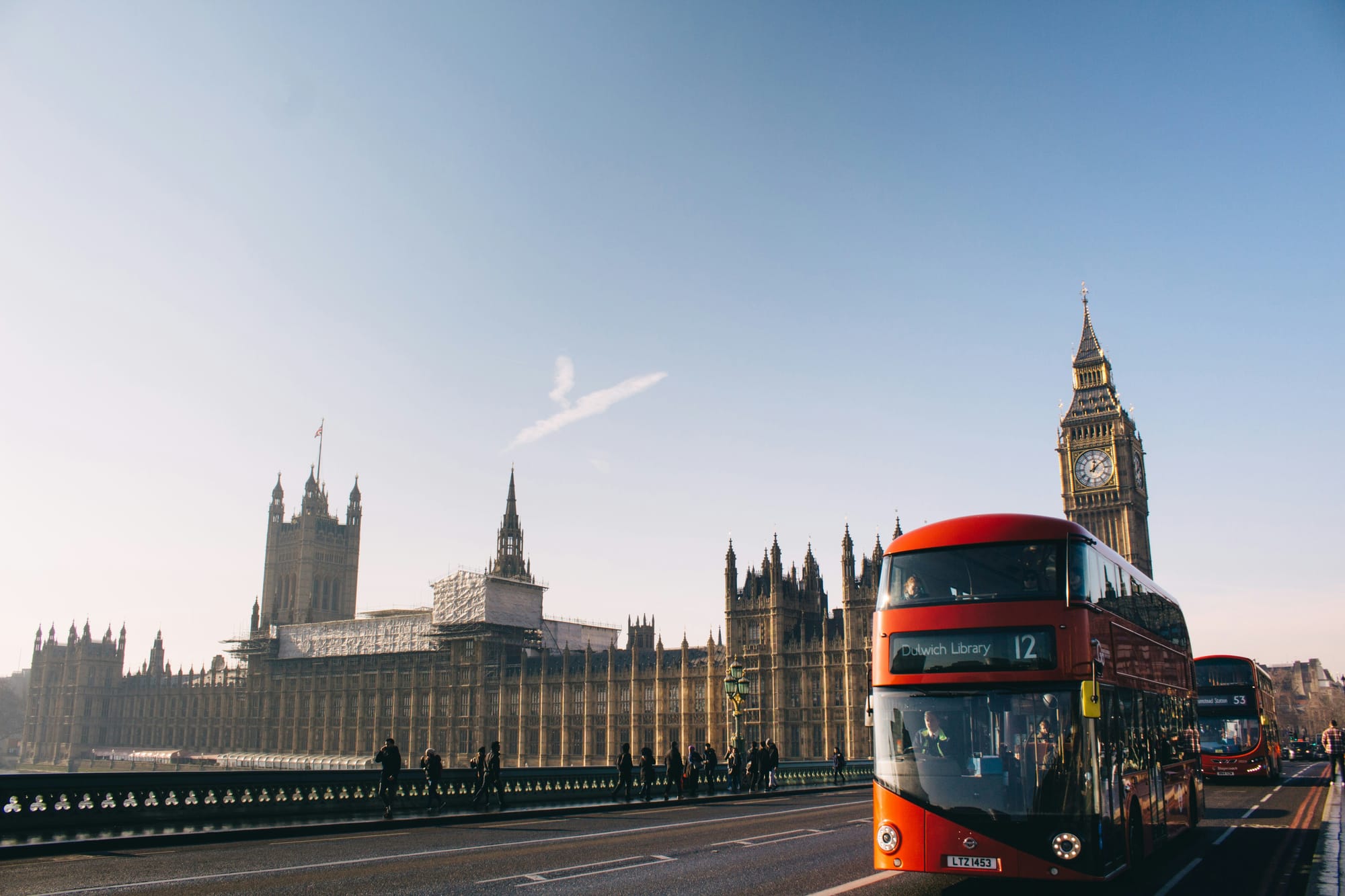
Taxis
One of the best taxi systems, the Black Cabs of London are well-known for their large spacious vehicles. These are all wheelchair accessible with ramps, intermediate steps, and swivel seats. Not only that, but all licensed Black Cabs have induction loops and intercom systems. They can be flagged down on the street or booked in advance. One such company to consider is Gett.
Trains
There are multiple major train stations in London including Kings Cross, Waterloo, Paddington, Victoria, and Euston. Each of these has trains from Southern, Thameslink, and Great Northern. Not only are these central hubs accessible, but the trains are too. These are best if you're looking to explore outside London and visit neighboring towns and cities. Be aware that not all rural train stations are accessible though.
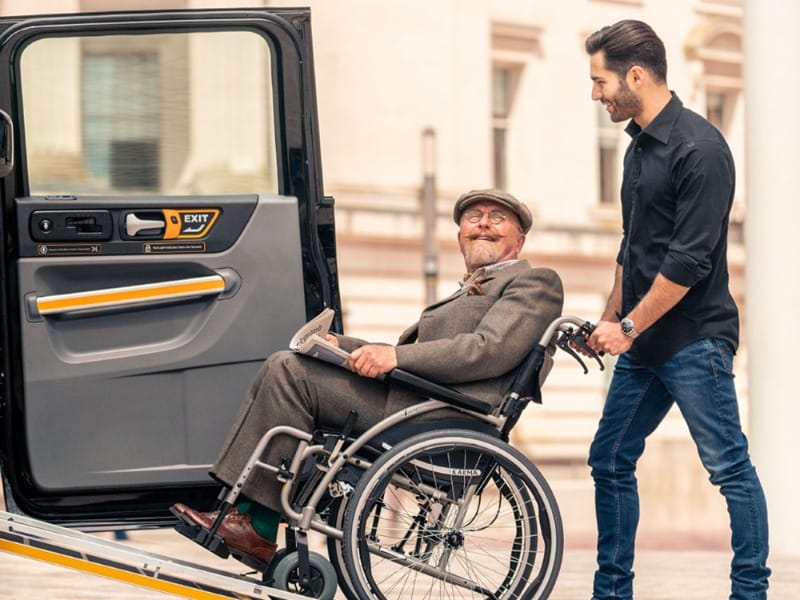
Top 10 Things to do and their Accessibility
London has a lot to see and do. Deciding what to see is made easy with accessible multi-day trip packages of not only London, but ones that can also take you further afield to iconic sites like Stonehenge. For a fun day out, take a day tour of the James Bond sites or the Harry Potter filming locations. Additionally, many attractions are accessible, which means you can visit them all yourself with little to no challenges. That being said, here are some of London's top attractions.
1. The British Museum
Filled with artifacts from around the world, the highlights of the British Museum are the Rosetta Stone and Elgin Marbles. Totaling around 8 million objects that range from Egyptian mummies to Van Gogh art pieces, this is considered a top museum in the world. And, it's fully accessible with ramps and elevators between rooms and levels.
2. The Tower of London
A UNESCO World Heritage site and home to the Crown Jewels, The Tower of London does have wheelchair access to most, but not all, areas of the building and property. View more information and a map for accessibility access areas here.
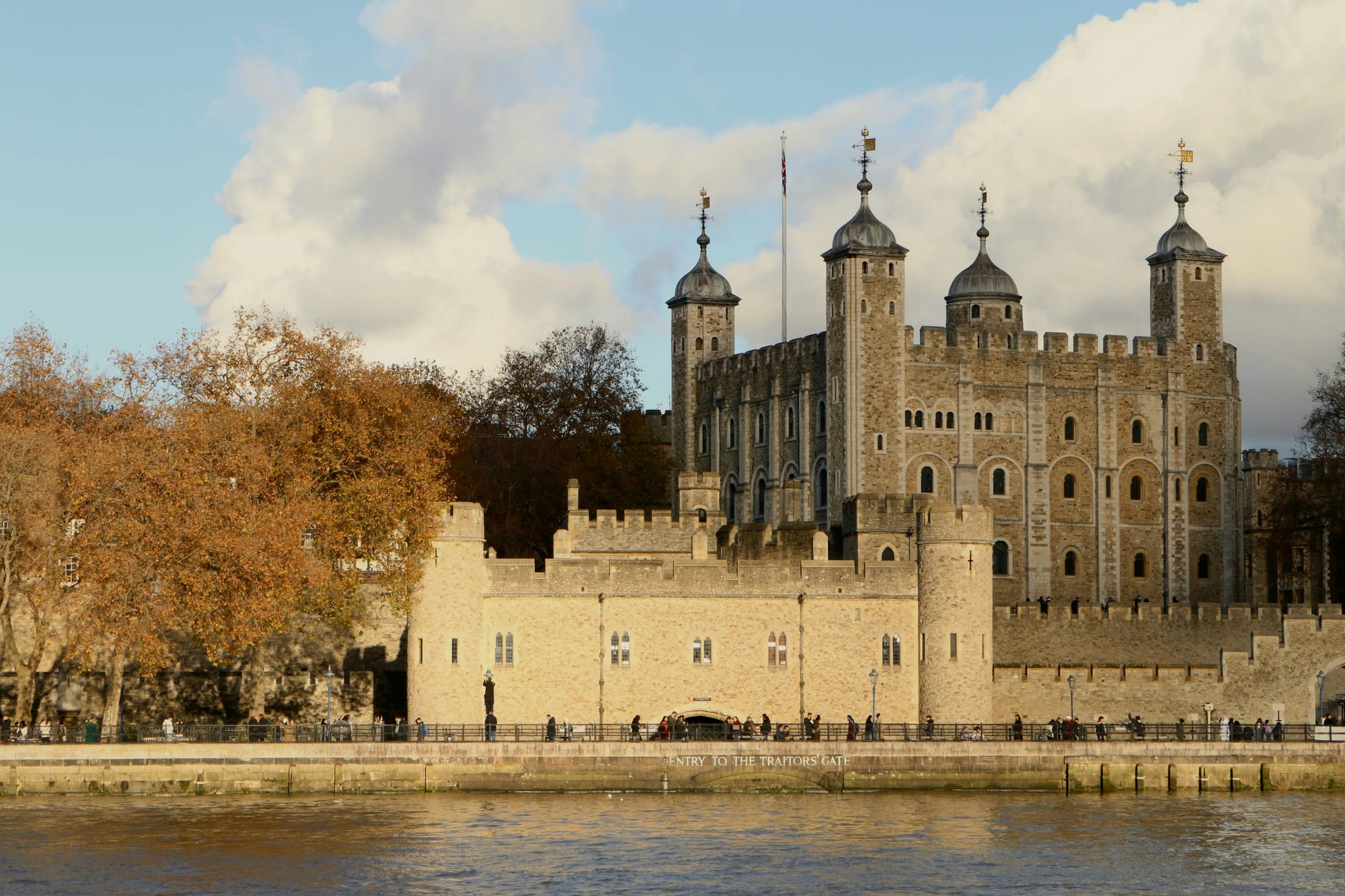
3. Buckingham Palace
The official residence of the Monarch, travelers can visit Buckingham Palace and tour many of it's highlights during the summer months. Some of the top highlights include Changing of the Guard ceremony, Throne Room, and the Palace Garden. Buckingham palace offers partial wheelchair access to the State Rooms and Gardens. For step-free entry at the front of the palace, visitors will need to contact the Specialist Sales team. They have wheelchairs available for use upon request. Find more information by clicking here.
4. The Houses of Parliament and Big Ben
The House of Parliament is a popular government office that visitors can tour and learn about UK parliament, or simply visit Elizabeth Tower, nicknamed 'Big Ben'. Viewable from the street or river, this landmark is great for photos. If you want to see inside though, there is limited accessibility for visitors with disabilities. For more information on an accessible tour of House of Parliament, click here.
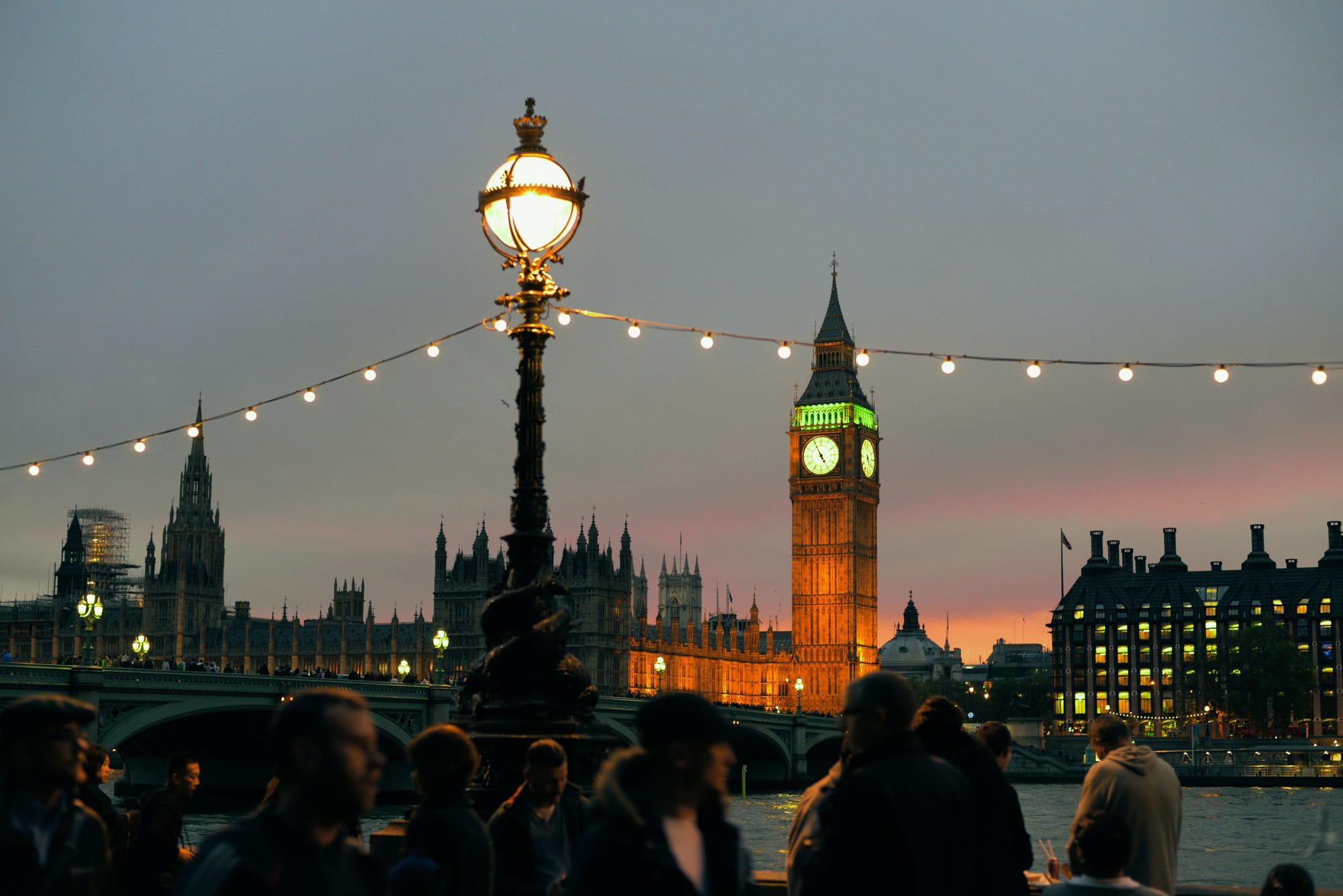
5. The London Eye
Get a full view of the city and major landmarks when you ride the observation wheel. Book in advance or get tickets from the ticket office on the day. The Eye is fully-accessible with a 37-inch wide ramp and plenty of moving space inside each pod. Boarding assistance is also provided.
6. The Tate Modern
This popular modern art museum is home to an impressive collection of works from hundreds of artists. It's fully accessible with lifts to all floors.
7. Covent Garden
Packed with shops and restaurants, Covent Garden is a nice area to explore. Grab a some food or beverage, enjoy street performers, and take a gander at the various shops. Covent garden is generally step-free and has wheelchair-accessible routes with ramps. Visit the information Booth at the front of South Wells and staff can help you find where to go, if you need assistance. There are accessible restrooms in the area as well.
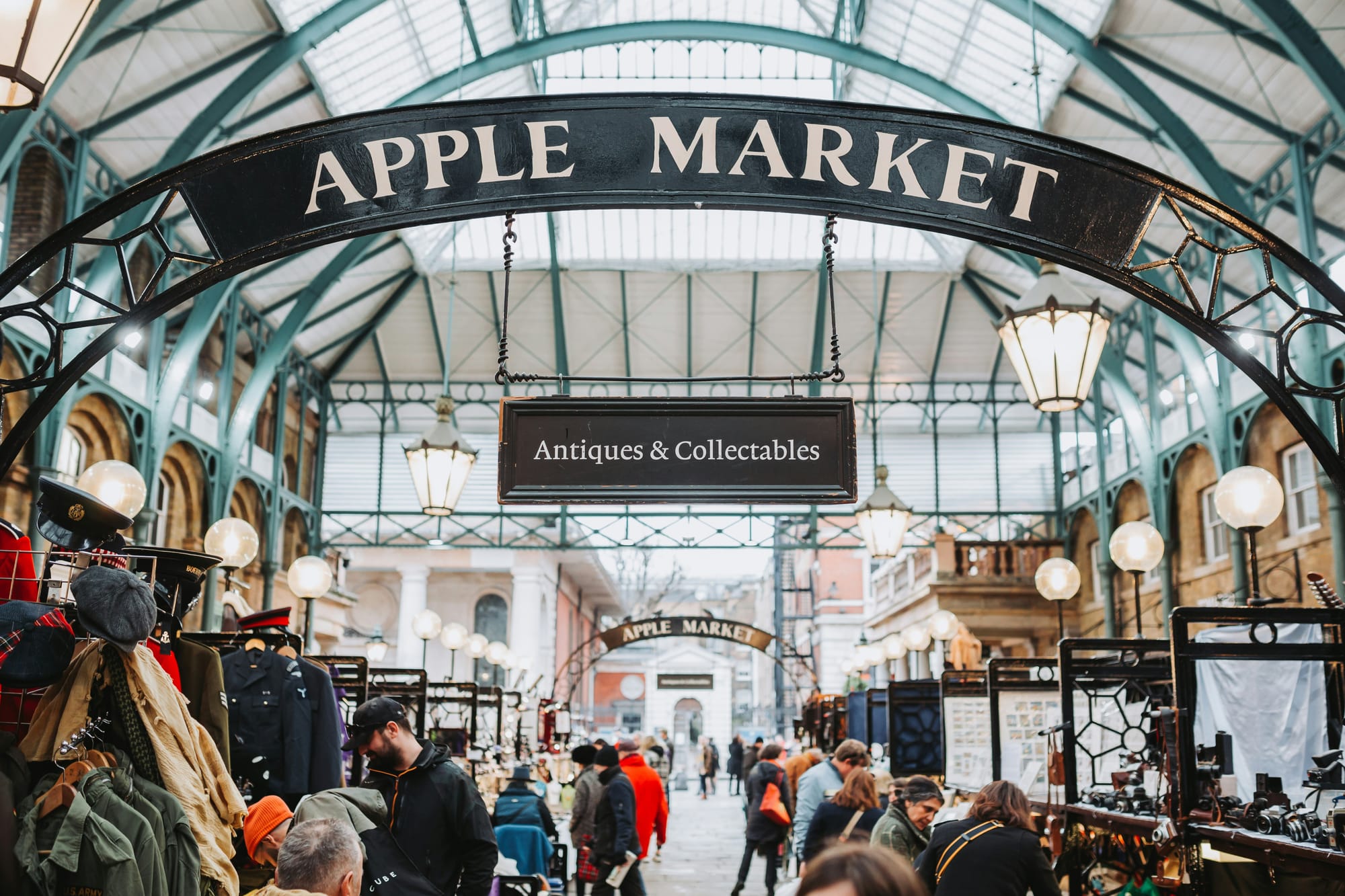
8. The Natural History Museum
A museum packed with everything natural including a massive dinosaur section, you can skip the ticket line if you have a disability. The Natural History Museum is accessible with ramp access, lifts/elevators available throughout, and restrooms that are wheelchair accessible. They also have wheelchairs available to borrow (for free), and service dogs are permitted.
9. St. Paul's Cathedral
With its recognizable dome, this amazing structure is worth visiting due to it's history, beautiful architecture, and panoramic views from the top. St. Paul's Cathedral is wheelchair accessible with elevator access down into the crypt and step-free ramped access at the North Transept entrance. Induction loops and guided tours are available.
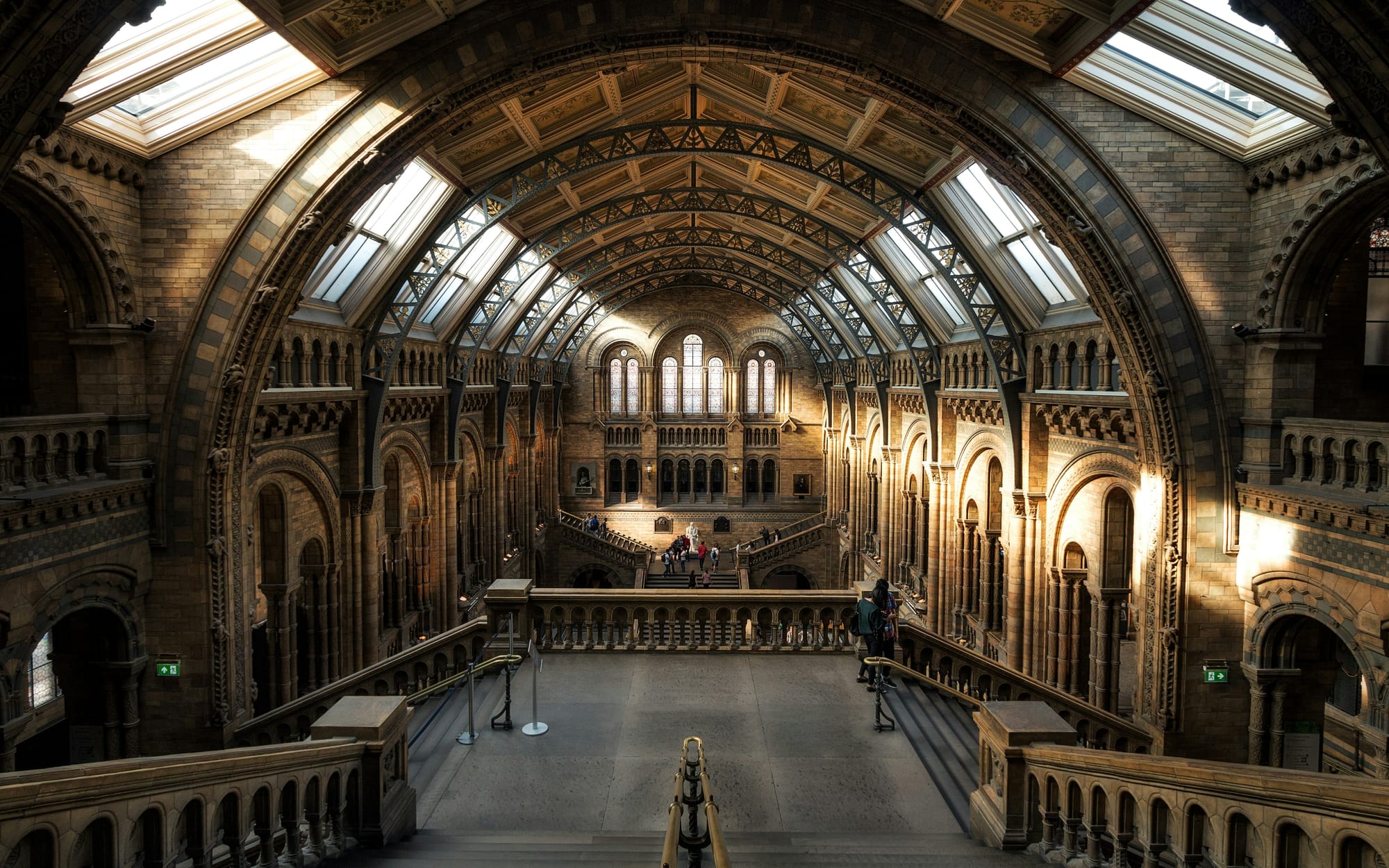
10. St Jame's Park
At roughly 57 acres in the City of Westminster (central London), St Jame's Park is the oldest of of eight royal parks. Escape from the bustling city and take a stroll through the peaceful paths that offer beautiful views of the lake and top attractions in London. For some of the best views within the park, head to The Blue Bridge above the lake. This bridge is famous for it's many views of popular sites in the city, including Buckingham Palace, The Horse Guards Parade, Big Ben and the London Eye. Don't forget to take your camera with you! St. Jame's Park is wheelchair accessible with mostly level paths and has an accessible bathroom as well.
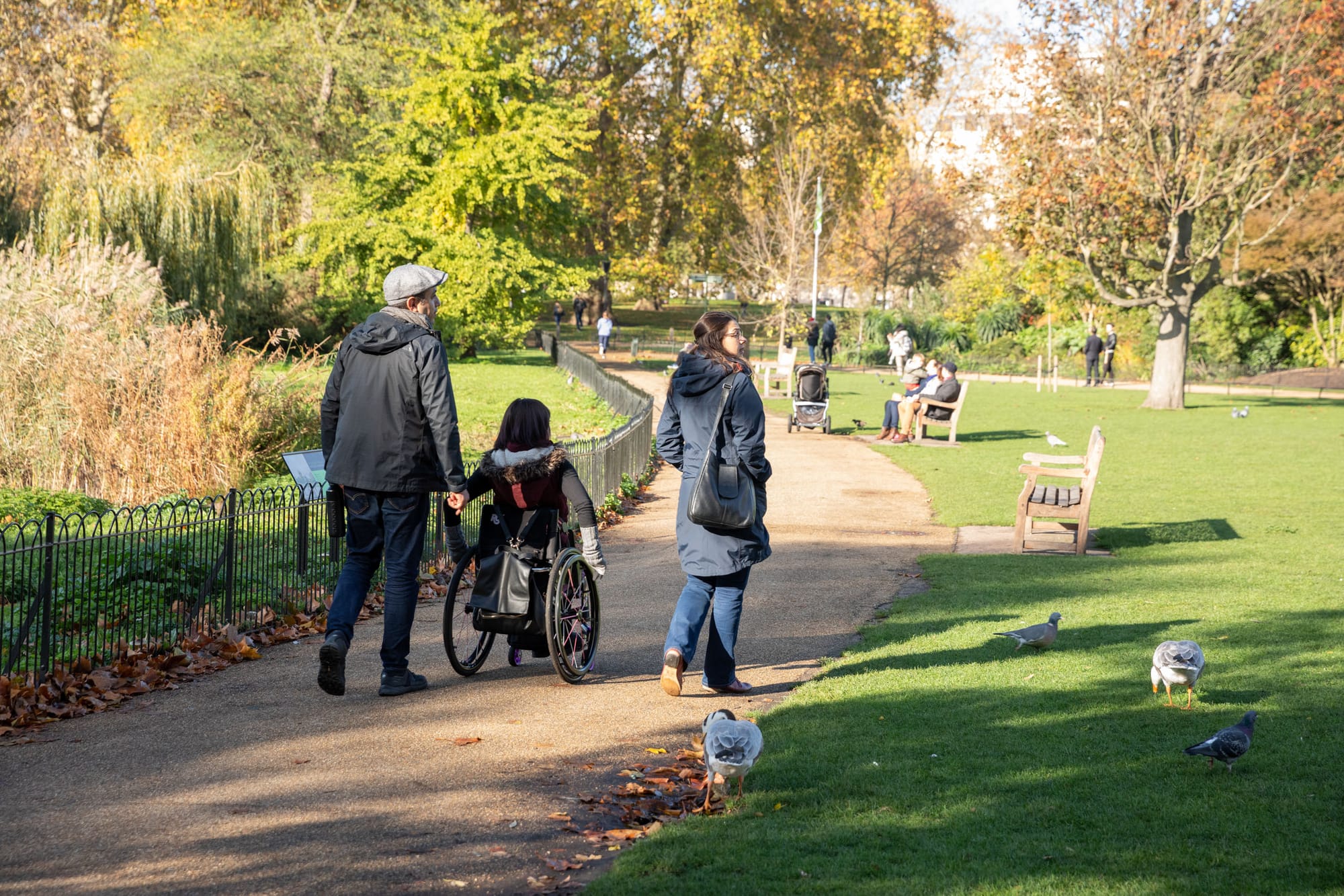
Accessible Restaurants Recommended by Our Community
If you want some delicious food, but in a place that's wheelchair accessible, then you're in the right place. While it can often be hard to find such a place, here it's easy, thanks to our Wheel the World community. Some of the best accessible restaurants have been identified and listed. These all offer plenty of space between tables, a wide array of delicious dishes, and ADA-compliant restrooms.
- Dishoom: Delicious Indian food in a stylish setting near Kings Cross. Booking in advance is recommended.
- Honest Burgers: Popular burger chain made from home-fed beef at Tottenham Court Road.
- Wahaca: Budget Mexican chain restaurant. Check out the Shoreditch branch.
- Duck & Waffle: Top-end European cuisine with a view on the 40th floor in Bishopsgate.
- Mildreds: Exciting vegetarian and vegan restaurant with a fun vibe in the Soho branch.
- Nando's: Popular South American-style chicken chain with vegetarian options. Site down for a bite at the Covent Garden branch.
- Dishpatch: Food delivery with an array of different cuisines on offer if you want to eat in.
- The Wolseley: High-end European brasserie with spacious interiors located in Mayfair.
- Beigel Bake: Exciting bagel shop in Brick Lane.
- Hawksmoor: Upmarket steakhouse where you can eat in their first restaurant in Spitalfields.
Accessible London Tips from Our Community
Finding Bathrooms
Throughout London, there are options if you need a restroom when out and about. While there are public restrooms, the easiest place to find accessible bathrooms is in restaurants, cafés, and hotels. This is especially the case if you're near a chain brand. Similarly, museums, art galleries, and popular attractions also have good restrooms with plenty of turning space, ramps, wide doors, and handrails. Major stations and transport hubs usually provide accessible restrooms for travelers. Look for the accessibility or disability sign indicating the accessible toilet when you're searching for accessible facilities.
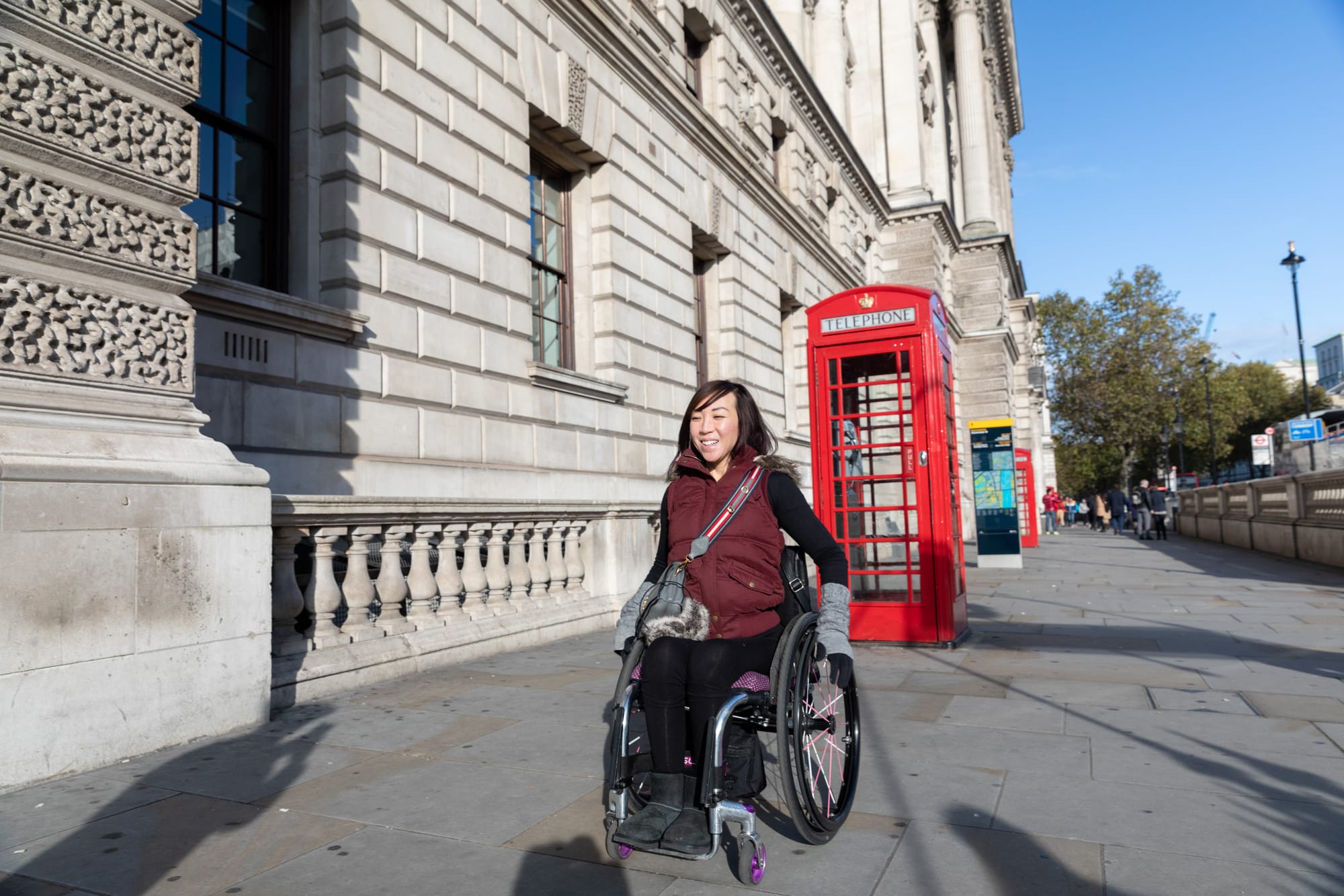
Packing List
Preparation is key when traveling. So, take a look at the items we recommend taking on your London trip:
- Disability documents and ID
- Medications
- Wheelchair charger
- Service dog essentials
- Converter if you're not from the UK*
- Shower footrest or chair
- Raincoat or umbrella
- Loose clothes for summer. Consider brining sweatshirts or jacket for cooler evenings.
- Warm jacket for winter
- Camera or smartphone for capturing moments
*The UK uses Plug G (three rectangular pins), and a 230V supply voltage.
Wheelchair Repair Shops
Despite London's sidewalks being smooth, it's possible for parts to get loose or damaged during travel. To give you full peace of mind, here are some reliable wheelchair repair shops in London, should this occur:
- 1st Step Mobility London — 571-573 Roman Rd, Bow, London E3 5EL, United Kingdom
- North West London Wheelchair Service — AJM Healthcare Industrial Park, Unit 3 Abbey Rd, Commercial Way, London
Safety
If you stick to tourist areas, London is a safe city. However, you should always take precautions such as hiding any valuables when among large crowds or on public transport. At night, stick to well-lit areas and avoid venturing into new places you haven't been in. Remember, when crossing the road, drivers are on the left side. Many streets, especially those near large transport hubs, will remind you which way to look with painted signs on the road itself.
At any time on your trip, if you feel you need help get in touch. Our WtW experts are ready to help you with anything you need. We can even help you plan out your London trip should you need it.
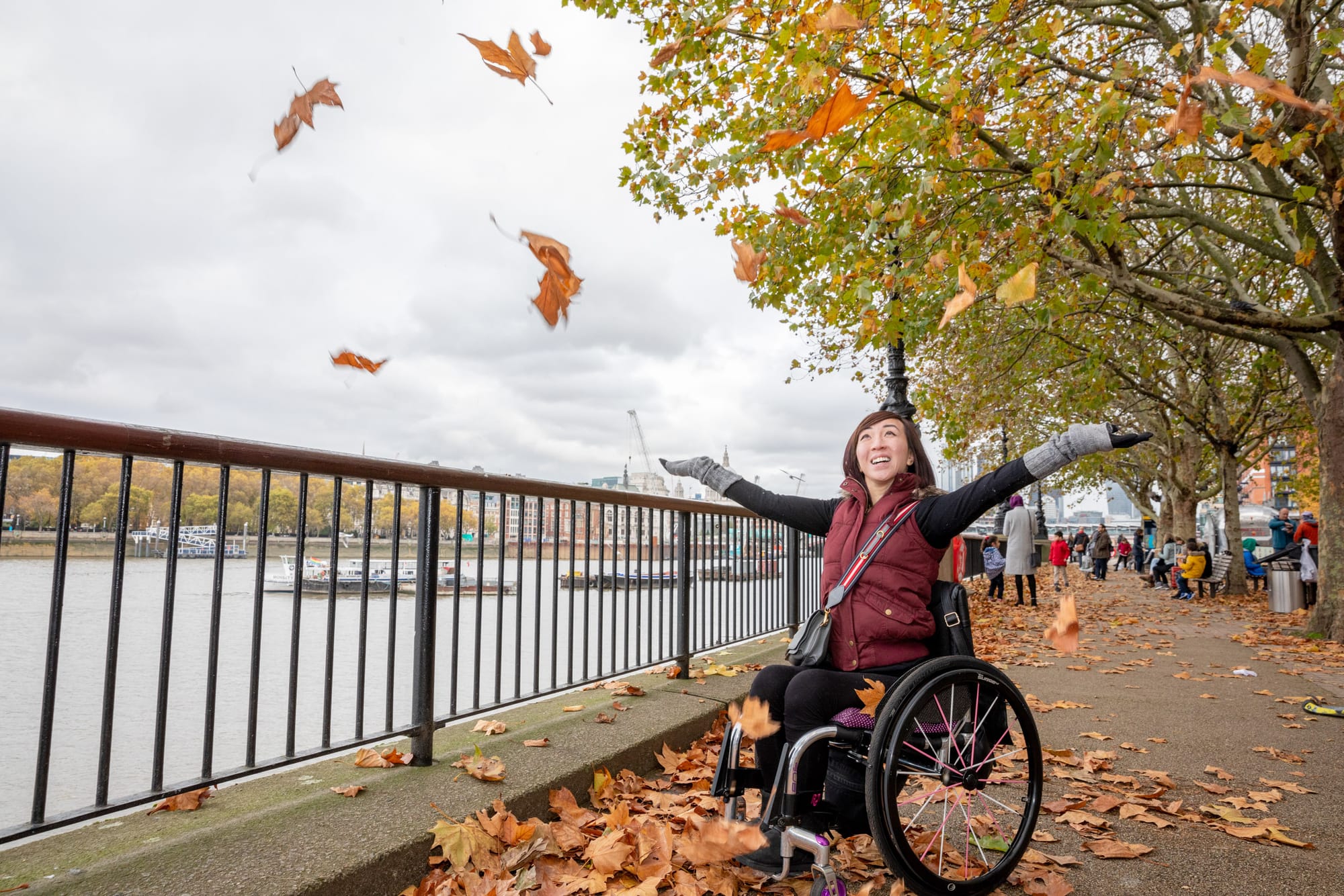
Your Travel Experience is Only as Good as its Accessibility. Book With Confidence.
Find accessible hotels, things to do, transportation, and vacation packages with accurate information.
Your Trip Awaits




Comments ()